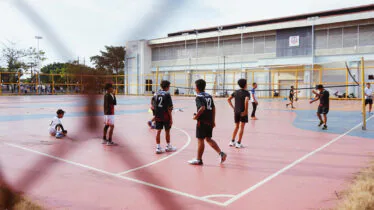From the Introduction to “Hanging In”
There is never one thing that defines a challenging student, never one cause, never one life event, never one disability. If it were one thing, the solutions would be simple. One of my own teachers confronted me with this important and demanding advice: “Keep the complexity as long as you can.” My stories in this book invite you to hang in with the complexities of our challenging students and to take action with no guarantees of immediately observable success. The only guarantee is more evidence that you can use with the next challenging student—because I can guarantee you, there will be another one who challenges your capacity to hang in.
Once, in a meeting convened to develop an intervention with a particularly idiosyncratic student, I said, “This is a lot like our work with Harry a few years back.” No sooner did I offer that bit of wisdom then hands shot up around the room with a chorus of, “No, this is not like Harry at all.” We had never shared our various conclusions about what had caused Harry to be so challenging; with the passage of time, the team was unable to reconstruct the events in Harry’s story in order to craft a shared understanding. Our stories are valuable only in as much as we collectively construct their meaning and articulate a shared wisdom. Set time aside to tell stories. The learning must be made explicit; we hang in collectively.
I have learned so much from working with our traumatized, neglected, and remarkably alive students and with their teachers. What I learn, the gift to me, is how this student and this student and this student are coming to understand this lesson in the varied and unpredictable ways the human mind can work. To be fascinated with the thinking and growth of each student is a formula for lifelong learning as an educator. Small classes are prime real estate for such adult education. The teachers in our schools who embody this accumulated education should be treasured and exalted, but too often they work without the resources and support their challenges demand. The admiration they get is often in the form of “I don’t know how you do your work,” but rarely are these teachers asked to say how they actually do their work, as if the teachers of our most challenging students are in a different profession or possess superhuman qualities. This is a loss for us all, because the accumulated stories of hanging in with our most challenging students are vital to maintaining a diverse and just society.



